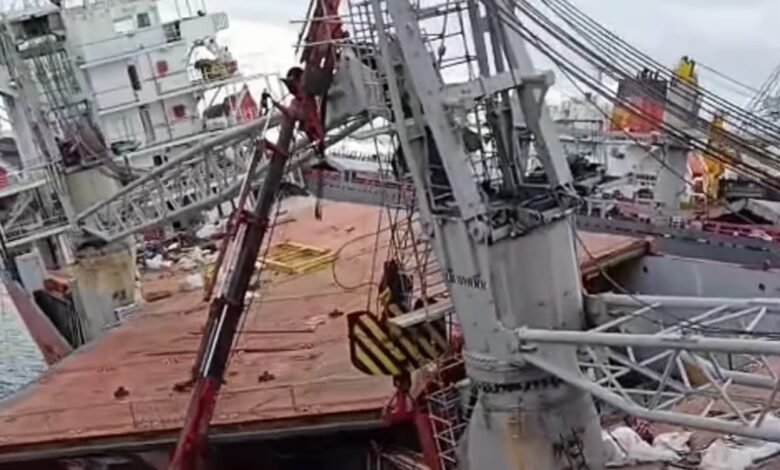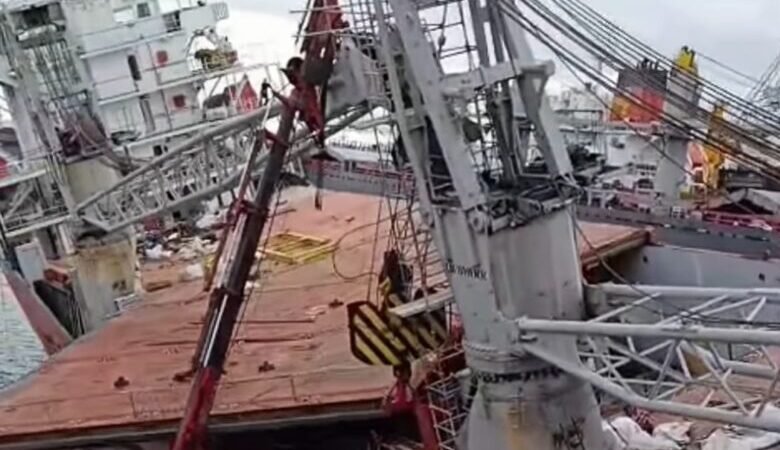A routine maintenance operation turned tragic at Istanbul’s Tuzla Shipyards when the roro vessel Elmes suddenly rolled over on Thursday 9th of October. The capsizing, which happened around 14:30 local time, threw several workers into the water and triggered a large-scale emergency response. One worker, 46-year-old Ukrainian Vlasyuk Yevgen, was fatally trapped under an evacuation ramp hatch. Four of his colleagues were injured and transported to hospital. The Elmes, a 5,104 deadweight ship built in 1997, was in drydock at the time. An investigation into the cause is underway.

HOW CAN THIS TYPE OF ACCIDENT BE PREVENTED?
Preventing tragic accidents like this requires a rigorous, multi-layered safety approach. Such incidents are often the result of a chain of failures, so prevention must break that chain at multiple points.
The following are key areas for prevention, moving from pre-planning to emergency response:
1. Pre-Work Planning and Risk Assessment
This is the most critical phase. Failure here makes an accident more likely.
- Detailed Dry Dock Plan: Every vessel entering a dry dock must have a detailed, ship-specific plan developed by naval architects. This plan must account for the ship’s stability in its current condition (e.g., without cargo, with tanks empty or full, with machinery removed).
- Stability Calculations: Formal stability calculations must be performed and verified before any work begins. This includes assessing the effect of any planned work, such as:
- Adding or removing heavy equipment (e.g., propeller, rudder).
- Transferring ballast water or other liquids.
- The collective weight of workers, equipment, and scaffolding on one side of the ship.
- Permit-to-Work Systems: For any high-risk task (e.g., ballast system work, hull openings, hot work), a formal permit system must be in place. This ensures that a competent authority reviews the risks, isolates necessary systems, and authorizes the work.
2. Operational Controls and Monitoring
Once the plan is in place, strict controls must be enforced during the entire project.
- Ballast Water Management: This is one of the most common causes of dockyard capsizes. A strict, locked-in Ballast Water Management Plan should be implemented. Only authorized personnel should be allowed to operate valves or pumps, and any change must be logged and approved.
- Continuous Stability Monitoring: The ship’s list and trim should be continuously monitored with sensitive instruments. Alarms should be set to trigger at pre-defined angles of list to provide an early warning long before the situation becomes critical.
- Weight Control and Distribution: A real-time log should be kept of all significant weights added to or removed from the ship. The cumulative effect must be checked against the stability plan.
- Structural Support (Blocking): In dry dock, the arrangement of keel and side blocks must perfectly support the ship’s hull according to its docking plan. Regular inspections must ensure the ship is sitting correctly and no blocks have shifted.
3. Communication and Competence
Human error is a major factor, which can be mitigated through training and clear communication.
- Clear Command Structure: Everyone on site must know who is ultimately responsible for the vessel’s stability (typically the ship’s captain or a designated “shipyard manager”). There must be a clear line of authority between the ship’s crew and the shipyard workers.
- Joint Safety Briefings: Before work starts and at the start of every shift, joint briefings between the ship’s crew and the shipyard workers should be held to discuss the day’s tasks, potential hazards, and emergency procedures.
- Specialized Training: All personnel involved, from the ship’s officers to the welders, must receive specific training on the unique hazards of working on a ship in dock, with a strong emphasis on stability risks.
4. Emergency Preparedness
Even with the best plans, things can go wrong. Preparedness saves lives.
- Clear Emergency Procedures: Well-drilled emergency procedures for events like a sudden list, fire, or person in the water must be established and understood by all.
- Regular Drills: The crew and workers must practice these drills regularly. In the Elmes incident, knowing the fastest and safest escape route could be the difference between life and death.
- Proper Emergency Equipment: Life rings, life jackets, and man-overboard alarms must be readily accessible. Escape routes must be clearly marked and kept unobstructed at all times.


Leave a Reply